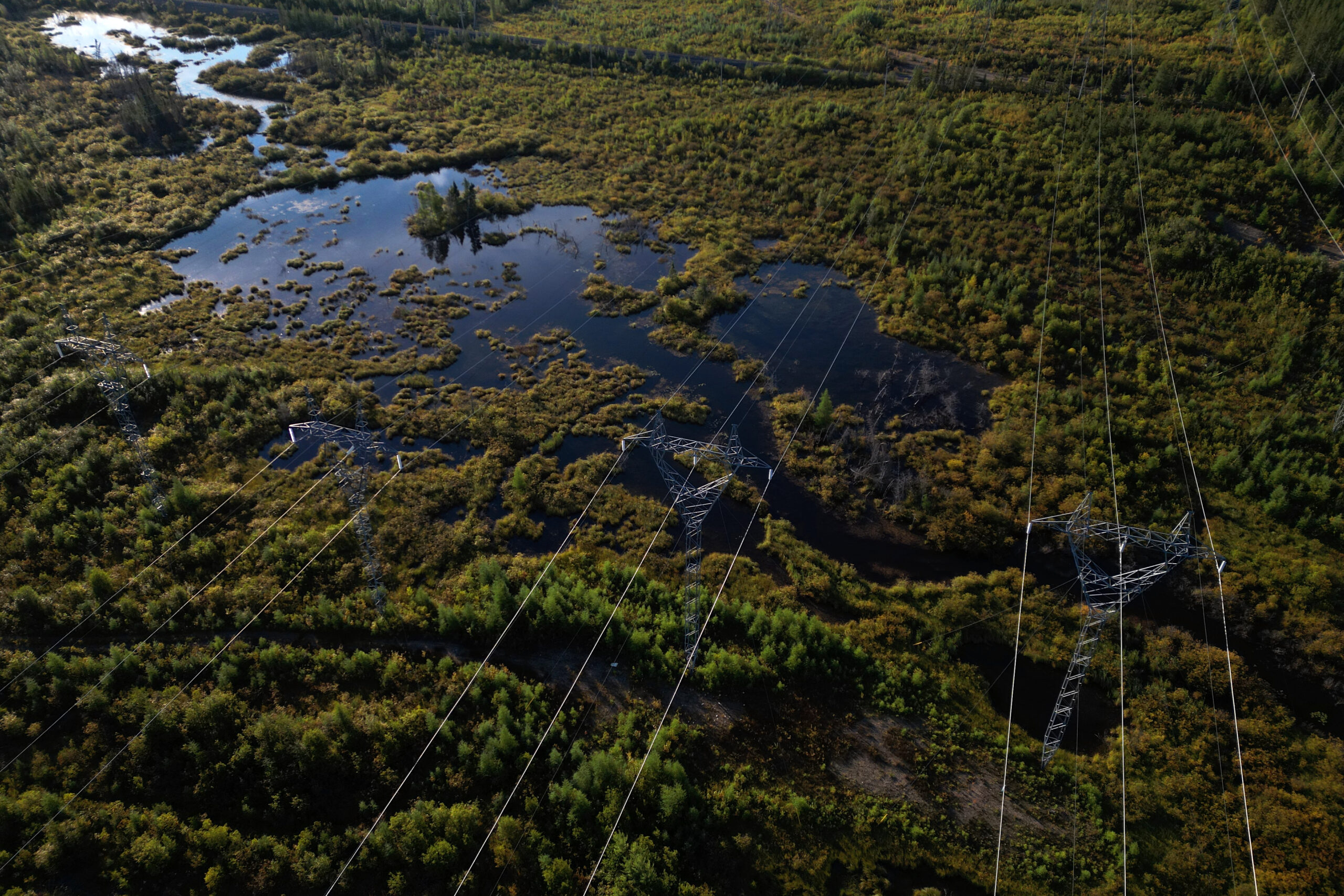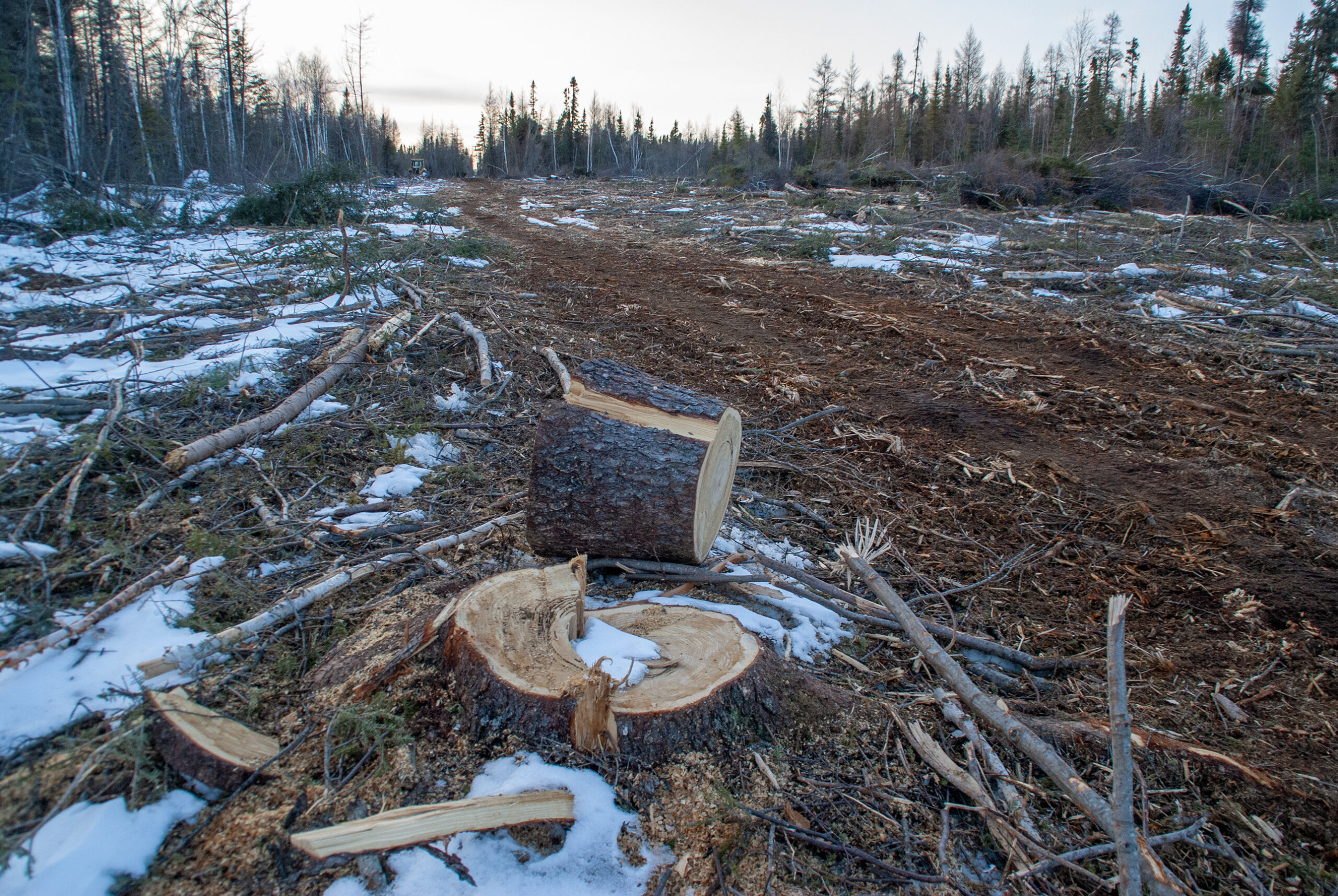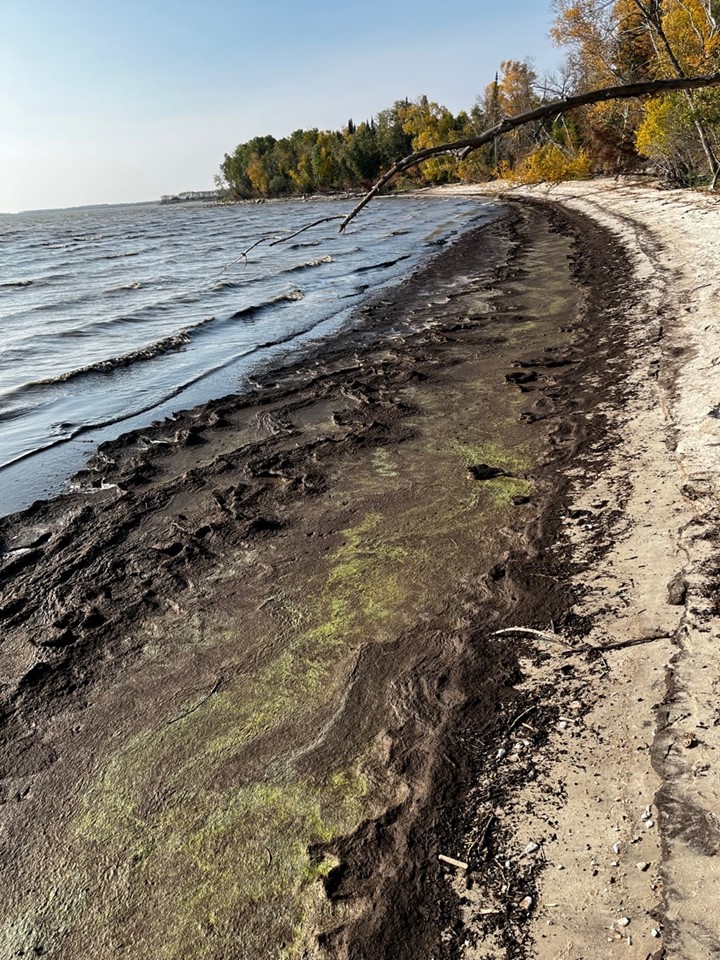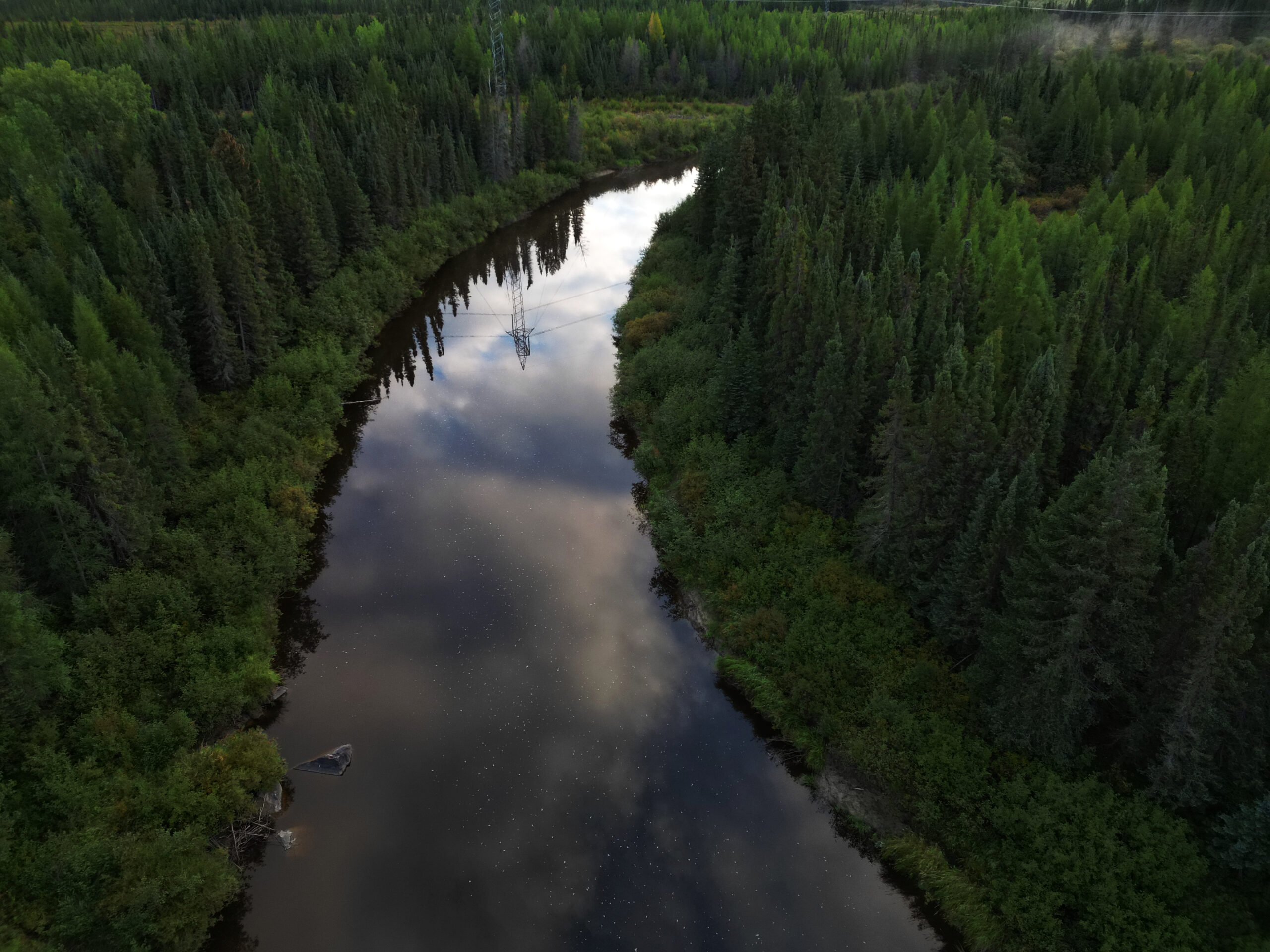
Rocky Mountain coal mine in Alberta takes next step to expansion
In Alberta, a massive open-pit coal mine near Jasper National Park is hoping to expand...
Get the inside scoop on The Narwhal’s environment and climate reporting by signing up for our free newsletter.
Residents and cottagers on the shores of Lake Winnipeg are asking the government to address environmental and infrastructure concerns from peat harvesting in the area before approving a new proposed mine.
SunGro Horticulture, the largest peat producer in North America, operates 25 peat mines across the continent, including several in Manitoba’s Washow Bay region on the west shores of Lake Winnipeg. The company is now seeking environmental approval to mine another 8.5 square kilometres of Interlake wetlands over the next 40 years.
Joan Buss, a permanent resident of the Little Deer cottage community across the highway from an existing mine, says peat mining has already caused extensive damage to the community’s highway, released peat and other sediment into Lake Winnipeg and sparked a wildfire that destroyed six cottages.
“I’m not anti-development; I’m not anti-economy,” Buss says in an interview.
“But don’t make me suffer for the road, don’t make me suffer for lost property value, don’t make all Manitobans suffer by polluting the lake. If all these problems got addressed and the peat mines were able to keep operating, I’d be okay with that.”

Buss and other residents have campaigned the government to introduce stricter environmental licence conditions on SunGro and other peat producers to mitigate the damage, but feel their concerns have not been addressed. They worry more mining will only exacerbate the impacts.
SunGro is proposing to expand its Julius Lake mine and create a new mine in the Sugar Creek bog, a little more than 10 kilometres from the lake. The Sugar Creek mine would employ 20 people “once harvesting scales up,” according to company documents. SunGro did not respond to a request for comment on the proposal and residents’ concerns by publication time.
Concerned residents are urging Manitoba’s environmental approvals branch to decide against the new mine — at least until existing concerns are addressed. Public comments on the proposal close on Monday. A petition to stop the expansion of peat mining on Lake Winnipeg and introduce a moratorium on new licences has more than 650 signatures. Residents are asking Manitobans concerned about the mine to contact their provincial representatives, sign the petition or submit comments opposing its development.
Peat is a carbon-rich accumulation of moss and other organic material, formed as plants decompose in sodden bogs. Peatlands cover about one-third of Manitoba, and more than 1.13 million square kilometres across Canada.
According to the United Nations Environment Programme, peatlands are among nature’s most productive carbon sinks, meaning they store more carbon than they release. Globally, peatlands represent just three per cent of land cover but store twice as much carbon as all the world’s forests combined.
Because of its ability to store water, peat is used as a soil additive in gardening and agriculture. Canada is the world’s largest peat producer, exporting approximately 1.3 million tonnes of peat annually. Manitoba is a major player in the country’s peat industry. Peat production directly employs about 300 Manitobans and contributes approximately $113 million towards the provincial GDP, according to a statement provided by an unnamed provincial spokesperson.
To harvest the moss, producers must clear cut forests and drain wetlands before dried peat can be vacuumed off the surface.


As peat is extracted from wetlands the plant matter starts to decompose, releasing stored carbon. In 2021, Environment Canada pegged national carbon emissions from peat production at about 2.1 million tonnes — equivalent to consuming almost five million barrels of oil.
“We have more peat bogs than most countries in the world and we have a responsibility to take care of them,” Eric Reder, director of the Manitoba chapter of the Wilderness Committee, says.
“It’s wishful thinking from extractive industry that they can extract this much carbon, put it out into the climate and everything will be fine in the future.”
When Ken Buechler bought his Pebblestone Beach cottage at a provincial auction in the early 2010s, he was sold on a pristine, forested cottage area with access to a sandy beach on the shores of Lake Winnipeg.
“What they didn’t tell us is there were all these outstanding peat leases,” Buechler says in an interview.
Manitoba has mined its peatlands for more than 80 years, but mining in the swampy Interlake region boomed in anticipation of a provincial moratorium on peat harvesting licences in 2011. The moratorium was in place from 2011 to 2015, though licence applications under consideration when the ban came into effect were ultimately approved.
As the first wave of new peat mines were proposed for the Washow Bay peninsula — a predominantly recreational area on the western side of Lake Winnipeg, home to some 250 cottages and multiple provincial parks, including Beaver Creek and Hecla-Grindstone — some residents and cottagers pushed back.
“The group here has basically appealed and opposed every one of these things unsuccessfully,” Buechler says.
A few kilometres up the road in Little Deer, Buss says the peat companies didn’t seem like bad neighbours at first.
“People from the area worked there and didn’t describe anything horrible,” she says. “A bit like the frog in boiling water … the reality sort of crept up on us.”
Increased truck traffic made the road almost impassable, Buss says.
“It’s in really, really rough shape,” she says. “It takes a ridiculous amount of time for me to pick my way through the mud and the ruts and the other hazards to get anywhere — and I don’t have a choice. I don’t have another road.”

Then peat started washing up on the beaches.
“We started noticing these big peat drifts on our beach. They used to come and go sometimes, depending on the wind. This year we don’t even see it moving much, it seems to be permanently there,” says Brock Huebner, a Pebblestone Beach cottager.
Residents have noted peat accumulation at several beaches, creeks and waterways in the area, including in Beaver Creek Provincial Park. When they asked Manitoba’s environmental regulators to investigate the peat accumulation on the shoreline and provide data about the impact of peat harvests on water quality, Huebner says they were told to file freedom of information requests.
The most severe impacts came in summer 2020, when a fire at a SunGro peat mine spread into Beaver Creek Provincial Park, destroying six cottages and stranding nearby residents behind an RCMP blockade for two days.
“Nobody could get any information on how they were doing, fighting the fire. We had no Hydro, we had no phones. We’re not even sure if the government knew we existed,” Buss says.
Residents say they still don’t know what mitigation measures the company has taken to prevent future wildfires.
It’s not just the road damage and muddy beaches that nearby residents are worried about.
Fisher River Cree Nation, which is in close proximity to the peat mines, has stressed the harvesting activities were approved without the nation’s consent and have destroyed habitat for local wildlife — especially for moose. The harvesting also limits the nation’s access to traditional medicines and has contributed to pollution in Lake Winnipeg, according to a Fisher River press release. The First Nation asked the federal government to review the proposed Sugar Creek mining project under the Impact Assessment Act, but in January, Environment and Climate Change Minister Steven Guilbeault determined the mine did not meet the criteria for federal environmental assessment.
Months later, the Environment Ministry granted Fisher River $5.1 million in federal funding to conserve their traditional lands by preventing peat mining. In July, Fisher River announced it had purchased peat harvesting licences from SunGro, covering an area of more than 200 square kilometres.
“By purchasing the licence, [Fisher River] has effectively removed all areas that were licenced to Sungro for peat harvesting on the west side of Fisher Bay,” the release says. “[Fisher River] will not harvest the peat moss there.”
According to a provincial statement, Manitoba is not currently considering any moratoriums on peat mining. The province’s peatland stewardship legislation — introduced in 2015 — instead allows the government to designate “provincially significant peatlands” as protected areas. In 2023, the province designated the first two protected peatlands, Moswa Meadows and Fish Lake Fen, which comprise 280 square kilometres and store more than eight million tonnes of carbon.
Peat producers are also required to develop climate change adaptation measures and an emissions reduction strategy, and to provide annual emissions reporting, the provincial spokesperson said.
“Examples of [greenhouse gas] emissions mitigation measures used by peat harvesting companies include minimizing land clearing, progressively restoring harvested areas, high standards of vehicle maintenance and limiting vehicle idling,” the statement added.
But residents of Washow Bay say their experiences show that current mitigation measures just aren’t working.
In addition to a moratorium on new peat licences near Lake Winnipeg, residents want the province to analyze the cumulative effects of peat mining in the area and tighten the conditions on existing licences. Above all, they want better communication from the province about the impacts of peat mining on their air, land and water.
“If they allow this new mine, we’re going to see more pollution on the beach, we’re going to see the local wildlife stressed even more and we’re going to see really bad outcomes on the highway,” Huebner says. “I’d like to see it halted.”
Julia-Simone Rutgers is a reporter covering environmental issues in Manitoba. Her position is part of a partnership between The Narwhal and the Winnipeg Free Press.
Updated on Nov. 17, 2024, 11:47 a.m. PT: This story was updated to correct that peatlands cover 1.13 million square kilometres in Canada, and not 113,000 square kilometres as previously stated.
Get the inside scoop on The Narwhal’s environment and climate reporting by signing up for our free newsletter. A $335 million funding commitment to fund...
Continue reading
In Alberta, a massive open-pit coal mine near Jasper National Park is hoping to expand...

A trade war could help remake B.C.’s food system, but will family farmers be left...

First Nations are leading efforts to make sure lake sturgeon can find a home in...
